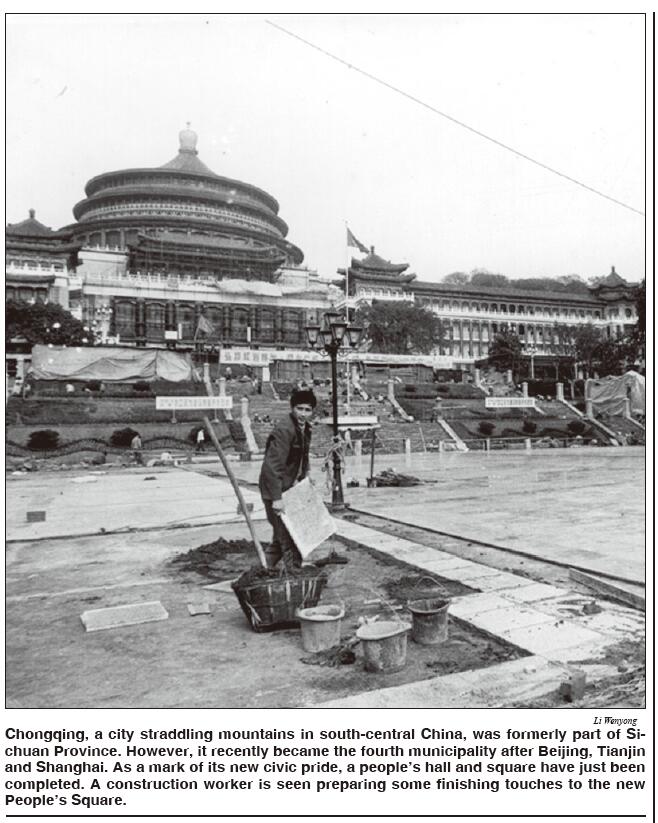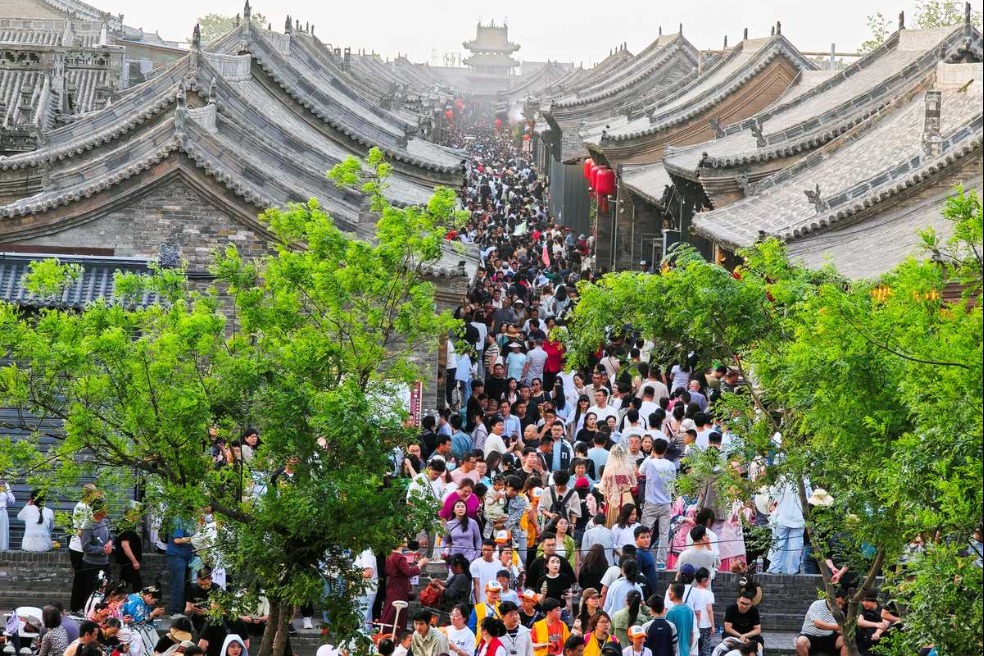This Day, That Year: June 18


Editor's note: This year marks the 70th anniversary of the founding of New China.
On June 18, 1997, Chongqing was officially upgraded to become China's fourth municipality after Beijing, Shanghai and Tianjin.
The new status aimed to help develop the central and western regions.
From 1954 to 1997, the city was under the jurisdiction of Sichuan province. An item on May 9, 1997, from China Daily showed a construction worker giving the final touches to the new People's Square in Chongqing.
Since then, Chongqing has played an increasingly important role in the country's development strategy.
In February 2010, it became one of the country's first batch of national central cities along with the other municipalities.
National central cities are the highest-level cities in China, and they have the core function of driving development of their regions and serving the entire nation.
In June 2010, Liangjiang New Area was established in Chongqing, which was the third national development zone in China, approved by the State Council, China's Cabinet, after Shanghai Pudong New Area and Tianjin Binhai New Area.
A metropolis with more than 30 million people, Chongqing has a dynamic economy: GDP exceeded 1 trillion yuan ($144.4 billion) for the first time in 2011.
In April 2017, the central government announced the launch of the China (Chongqing) Pilot Free Trade Zone.
The zone, spanning about 120 square kilometers, comprises three parts - Liangjiang New Area, Xiyong and Guoyuan Port.
As the only municipality in western China, the traditional industrial hub, located at the intersection of the Belt and Road Initiative's trade route and the Yangtze River Economic Zone, has witnessed fast economic growth.
- From muggles to birders, quiet hobby finds its wings
- Two-way tourism between China, Europe gathers pace over May holiday
- Nanjing Massacre survivor Liu Guixiang dies
- Macao's resident deposits rise in March
- Taiwan youth seek their career in Chinese mainland
- Xi urges youth to contribute to Chinese modernization





































